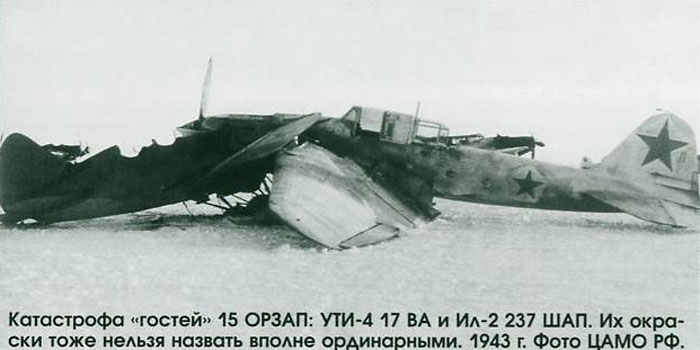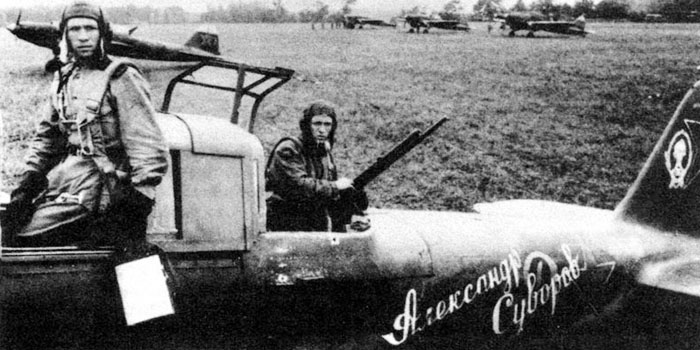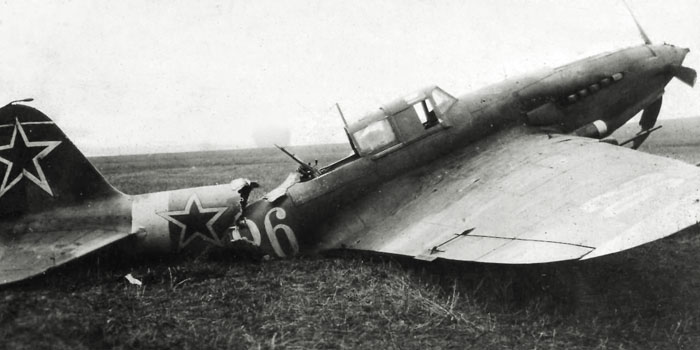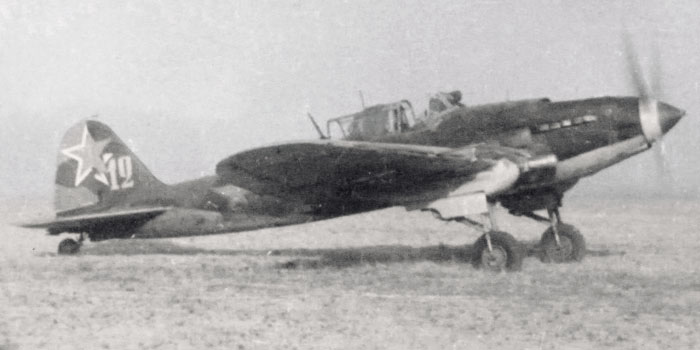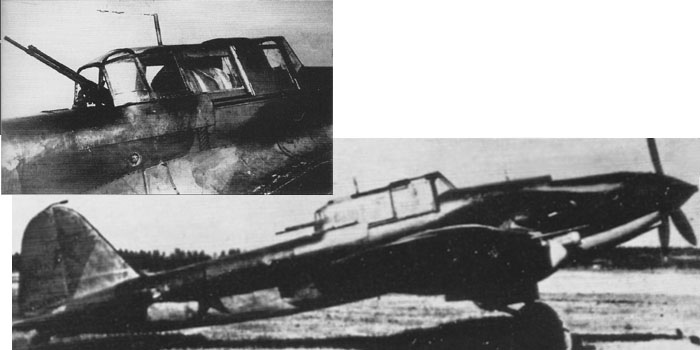
Here is the prototype with UBT machine gun, built in Factory n.30, c/n.887, presented to state tests in October 1942. It is very close to the following production planes, and features:
- new long canopy (let's call it 'tunnel type');
- short radio aerial mast ( a taller mast was introduced in late 1943)
- UBT defensive machine gun, as the following production Il-2M;
- wooden rear fuselage, as nearly all the variants of Il-2;
- straight wing (made by wood, as usual for planes built in Zavod 30) with VYa-23 mm guns, exactly as the single-seaters of 1942;
- filter at the carburetor intake on the right wingroot (they have already started to be installed on late singleseaters in late 1942)
- AM-38 engine
- it has still the small tail wheel of singleseater and a leather or tissue boot, while the production Il-2M received an enlarged tailwheel ;
- the black/green camouflage looks to have the typical pattern of single-seater planes built in Zavod 30, unclear if in the variant with the black 'balls' on the sides or, more probably, without them; the demarcation line of the light blue undersurfaces on the rear fuselage and wing leading edge is unusually high.
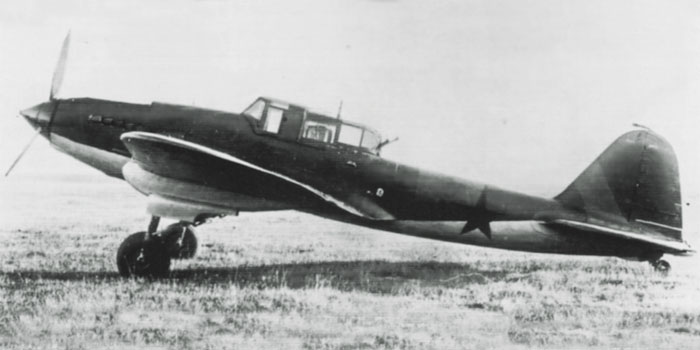
This image shows the 'loser' prototype with ShKAS machine gun, that was not chosen for the production.
However, the work on it was not wasted, because his semi-turret with ShKAS mg was produced in about 750 sets for the conversion of already built single-seater Il-2 into twoseaters.
See this page for more images on converted IL-2s.
Apart for the weapon and for the more usual border between light blue and green on the fuselage sides, this plane looks identical to the previous one with UBT machine gun; if compared to production planes, it lacks also of the couple of wing rails under each wing console.
(From Ilyushin Il-2 by Oleg Rastrenin)
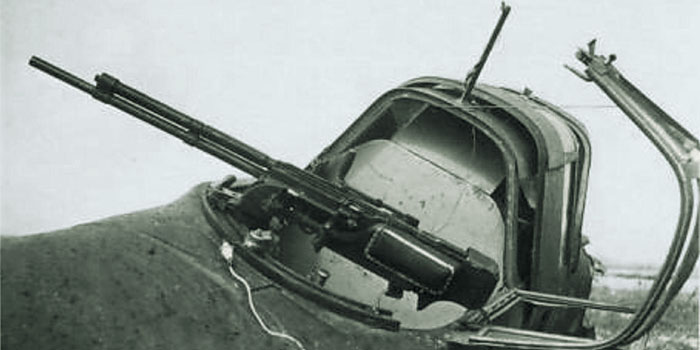
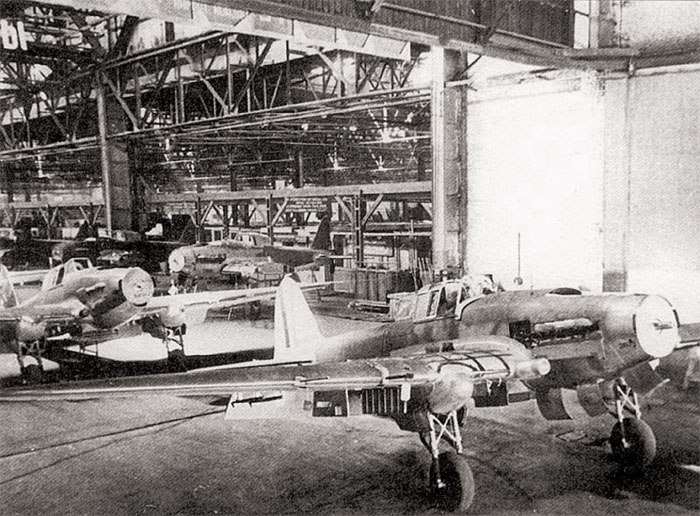
The two seater Il-2 with the UBT machine gun replaced the single-seater into production at Zavod 1, 18 and 30 in October.
The new version hadn't an official name, being the variations distinguished only for the number of production batches, but it's often referred as Il-2M in postwar literature.
Having been into production from November 1942 to December 1943, it could also be called 'Il-2 model 1943'.
The Mikulin AM-38 engine was soon replaced by the more powerful AM-38F on the production line, but this modification hadn't any visual evidence on the plane.
Z.1 produced planes with wooden wing consoles, just as Z.30; in photos,
wooden wings are distinguishable from metal wings (produced in Z.18)
because of the rounded shape of the landing light, but the easier distinction
is made by observing the style of the camouflage and of the stars.
Starting from the late spring of 1943, Zavod 1 produced the Il-2KR artillery spot/reconnaissance plane too; to know more, click here:
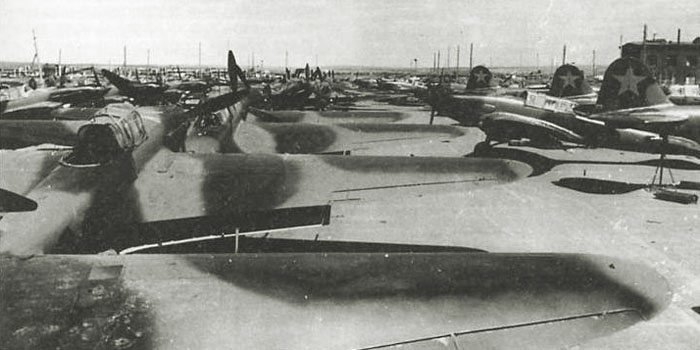
This image shows a park full of new Il-2s out of Zavod n.1 in Kuybyshev; the photo was taken in mid 1943, as one can understand from the new style of the rear canopy, that replaced the fixed rear part of the tunnel with a short 'roof' solidal to the hinged part; this new configuration allowed a greater lateral field of fire, and was introduced in summer 1943.
Before this period, Z.1 produced Il-2M with 'tunnel' canopy just as Z.30 and 18.
The standardization of the pattern is obvious, even if it doesn't follow closely the NKAP template. Note the very soft demarcation lines.
It was occasionally observed the 'reversed' version of this pattern, that is green and black exchanged in position.
Below: a drawing of these planes
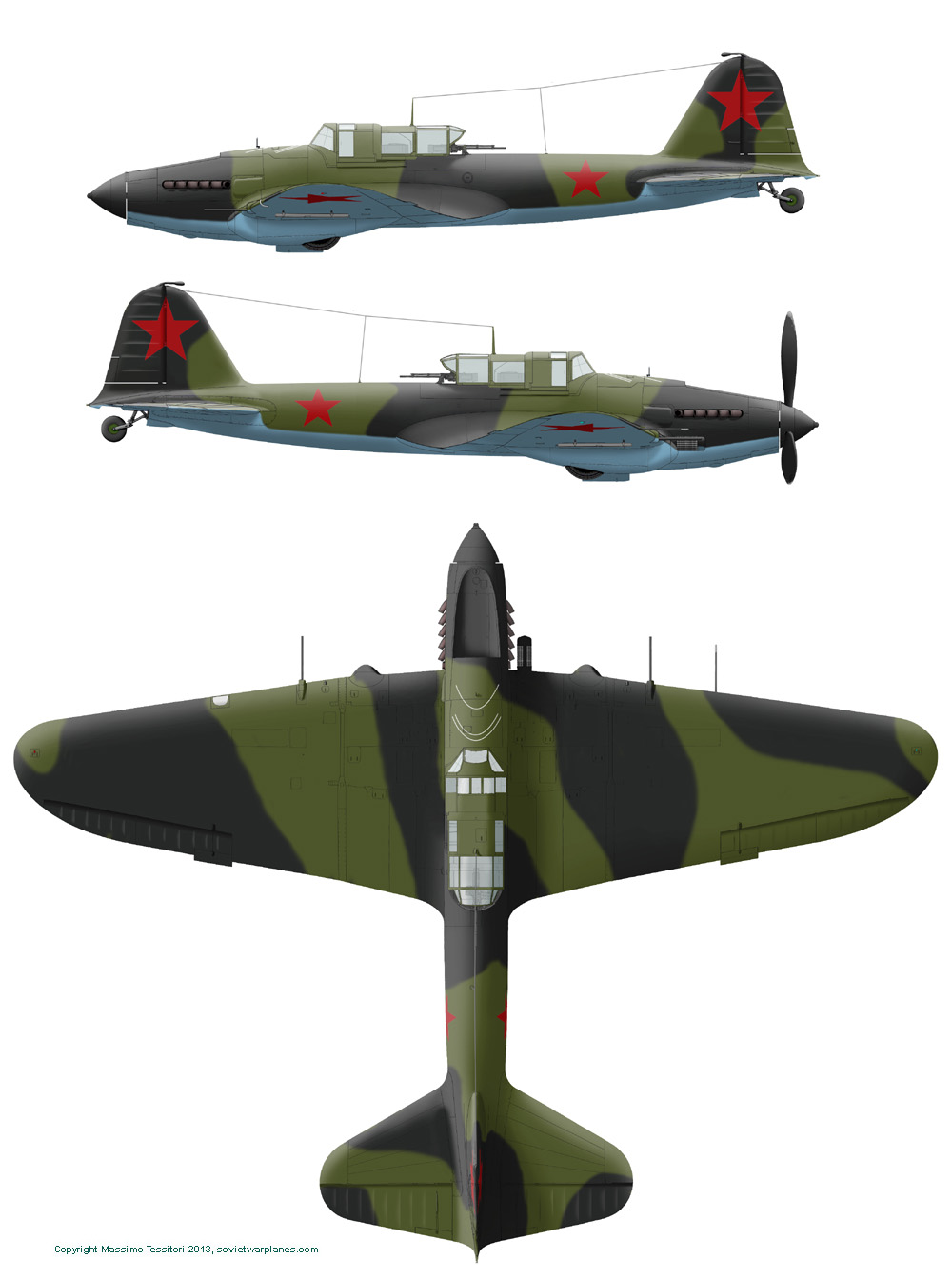
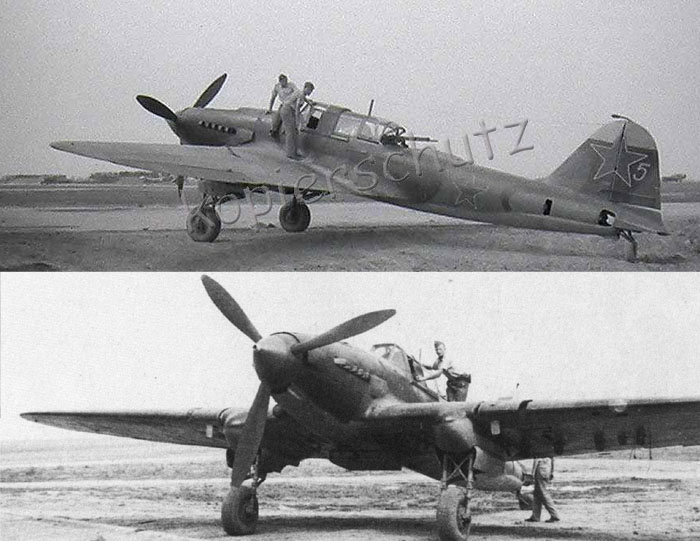
The only available images of an operative transition Il-2 as those of the photo above are these, representing white 5 of an unknown unit captured by Germans, probably in fall 1943.
We recognize the rare combination of the 'roof' type rear canopy and black/green camouflage, produced in July 1943, immediately before the change to 3 shades camouflage. The rocket rails, probably absent due to the damages to the plane, were probably of the early type instead of the later flushed one. Note the absence of the stabilizators and elevators.
The red stars have unusually thin white outlines, probably painted after the delivery of the plane. It is unclear if there is the outer red outline too.
Other interesting characteristics of the plane include the oblique font of the bort number, the white tail cap and the (probably) red front of the spinner (recognizable for its glossy finish).
Thanks to Vitaliy Timoshenko for the scans.

A reconstruction of this plane.
Click on the profile to see a larger 3-views drawing.
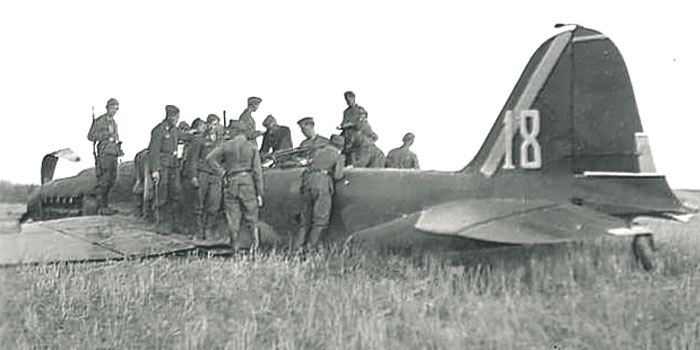
This plane seems to show the characteristic livery of planes built in Zavod 1 (see below) on its rudder. The plane is probably photographed in mid 1943, and has wooden wings as all those built in Zavod 1 at this time.
The number 18 is overposed to a light band of unknown color, certainly an unit marking. Besides a small red (?) cap with white outline looks visible on the rudder.
The trim fences of the rudder and elevators are painted white.
The plane is certainly an Il-2M because the rear UBT is clearly visible, but the German soldiers cover the canopy; it seems that the rear section was removed to allow a greater field of fire.
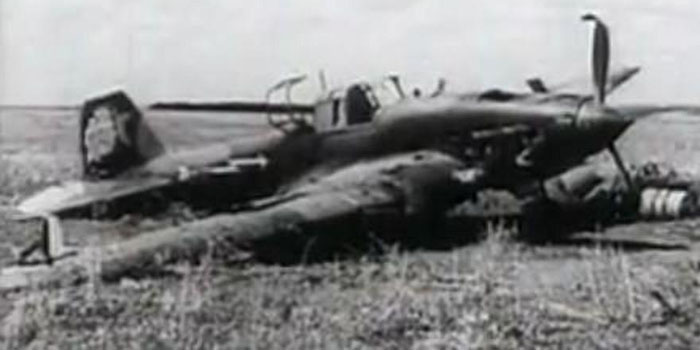
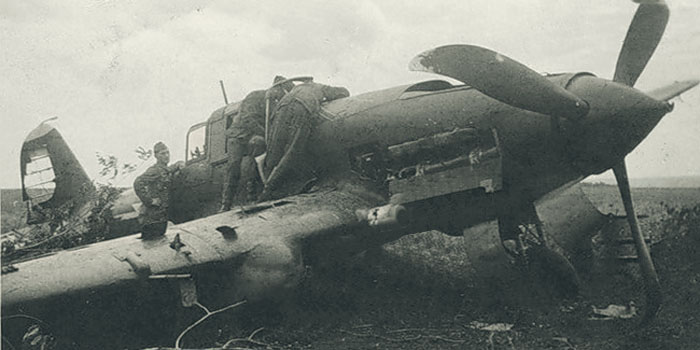
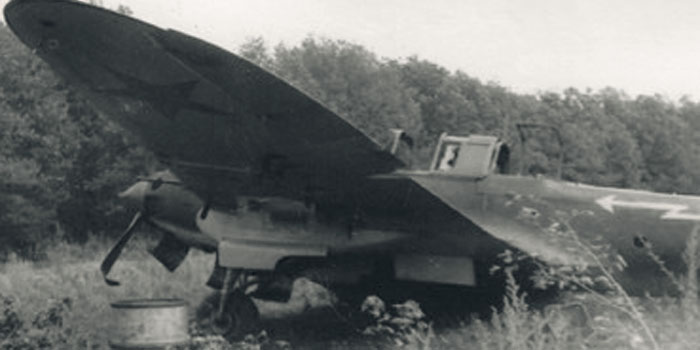
Il-2M with an interesting arrow emblem on both the sides of the fuselage, probably of the 800 ShAP during the battle of Kursk. The unit became 144th Gv.ShAP on 15-2.1944.
http://www.allaces.ru/cgi-bin/s2.cgi/sssr/struct/p/shap800.dat
The photos were taken in Belgorod in July 1943.
The plane bears the typical green-black camo of Zavod 1. Note the unusual rear canopy, of cutten' type; it's unclear if this was made in the factory or on the field.
A white cap is visible on the tail, but a hole in the fabric skinning of the rudder could hide an unknown bort number.
The spinner looks to have some color variations, perhaps a thin red line on its rear.
A drawing of this plane.
Click on the profile to see a larger 3-views drawing.

An Il-2 White 51 named after 'Pobeda'.
Belgorod-Kharkov-1943
Thanks to A. Ruchkovsky and V. Timoshenko
Il-2M Red 11 of 237th ShAP lost due to a ground collision with an UTI-4 in February 1943.
The camo pattern is hidden by the white winter finish, but the position of the stars suggests a plane built in Zavod 1 (or, as a second choice, on Zavod 30; surely not in Zavod 18) with wooden wings.
Image from M-Hobby 5/2001
A drawing of red 11.
Click on the profile to see a larger 3-views drawing.
Zavod 18 was the only factory that produced Shturmoviks with all-metal wings for all the wartime. Metallic wings of Il-2M differed from those of the late single-seaters because they hadn't no longer the external balance horns near the wingtips, that made so easy to distinguish metallic wings on singleseaters.
The rear, fixed part of the 'tunnel 'canopy was a bit shorter than those produced in Z. 1 and 30; later it was made solidal to the hinged part.
The landing light window on the wing is angular, instead than rounded as on wooden-wing planes built by Z.1 and 30.
The red stars with thin white outlines are a typical factory mark of Z.18, and haven't to be confused with the white-red outlined stars introduced for all Soviet planes in August 1943.
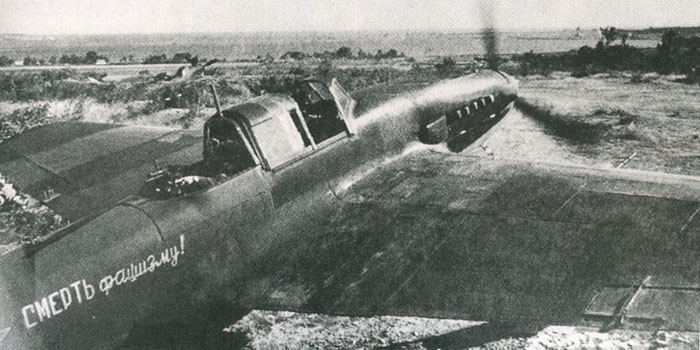
This plane shows clearly the characteristics of those built in Z.18: metallic wings, white outlined stars, longitudinal green/black bands on the left wing.
The right one is strangely unclear, very worn and with repaintings, probably due to damages.
The most noteworthy thing is the slogan 'Smert fashizmu!" that means 'Death to fascism!.
The tactical number, if any, is unknown.
Note the aiming lines over the nose. The spinner seems of a light shade.
A drawing of white 28.
Click on the profile to see a larger 3-views drawing.
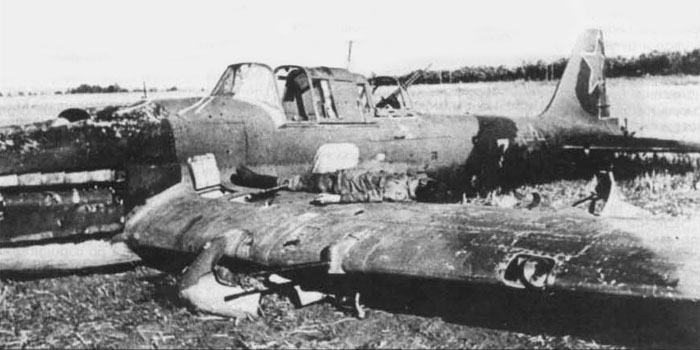
A metal arrow wing Il-2M after a forced landing in the Orel area, 1943.
Apart for few details and repaintings, the plane shows very well a typical plane built by Zavod 18 in late 1942; the rear canopy has a fixed part that is still on place.
The green-black camouflage is characterized by a black rounded blotch on each side of the tail, one black band amid the rear fuselage, and two strongly oblique black bands on each wing, and a black nose; the pattern has some resemblance to that of the singleseaters previously built in the same factory, but was more simplified and uniform.
A drawing of white 7.
Click on the profile to see a larger 3-views drawing.
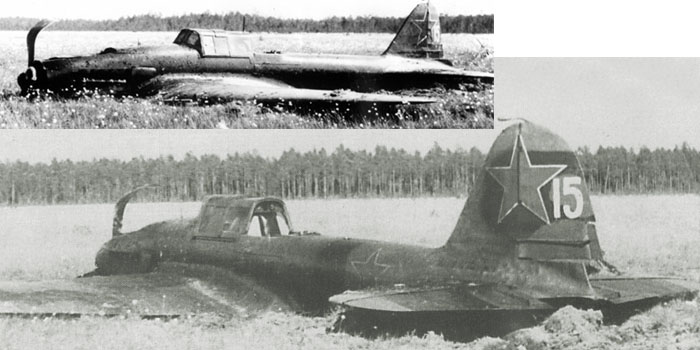
White 15 was flown by Major Bamshin and belly landed on June 1943 on the Finnish front.
The camo pattern is typical of Zavod 18, but some lighter repaintings, possibly made with AMT-1 light brown, seem visible on the tail and wing.
The tips of both the horizontal and vertical surfaces of the tail seem repainted with an unidentified color, possibly as identification mark. The spinner is missing, what seems a white band on it is only part of the hub.
The silver or white outlined stars are typical of Factory n.18 since of the war's outbreak.
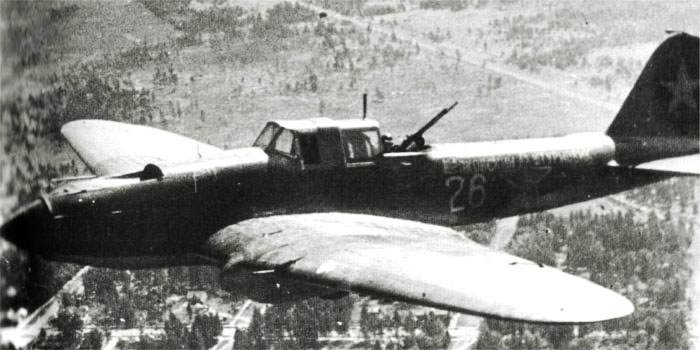
This plane is of the 15th Gv.ShAP; the slogan on the fuselage (common to other planes of the unit) is 'SHCHELKOVSKIY SHTURMOVIK', that means 'Shturmovik of Shchyolkovo', a small town near Moscow where the funds to build the planes were raised.
The plane is difficult to attribute to a factory: the camouflage looks rather similar to that of Z.18, with some characteristics of that of Z.1; the look of the stars is not as that of Z.18, despite the white outline around the huge fuselage star; some panel lines are visible on the left wing suggesting a metal wing, but they could be repairs to the fabric layer too; at the end, the ShKAS guns on the wings, utilized in case of shortage of supply of the standard VYa-23, in 1943 are more credible for a plane of Z.1 instead of Z.18.
According to V. Timoshenko, the spinner was red (a squadron color; other squadrons had dark blue or silver spinners).
A drawing of white 26.
Click on the profile to see a larger 3-views drawing.
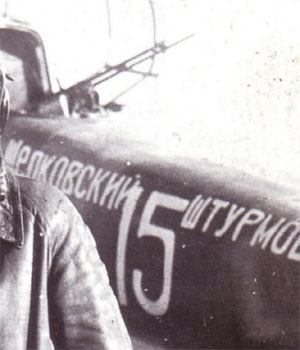
A detail of the slogan on the plane of the unit's commander, HSU Lt.Col. Svitenko.
The bort number 15 looks unusually painted instead of the star on the fuselage.

This forced-landed Il-2M of 46 ShAP VVS SF flown by Sobolev is clearly a plane with metal wings built in Zavod 18 in late 1942 or early 1943, but shows many pecularities:
- the remains of white winter paint;
- the unusual stars (narrow on the tail, with unusual black outline on the fuselage)
- the beautiful n.20, probably red with silver outline.
A drawing of red 10.
Click on the profile to see a larger 3-views drawing.
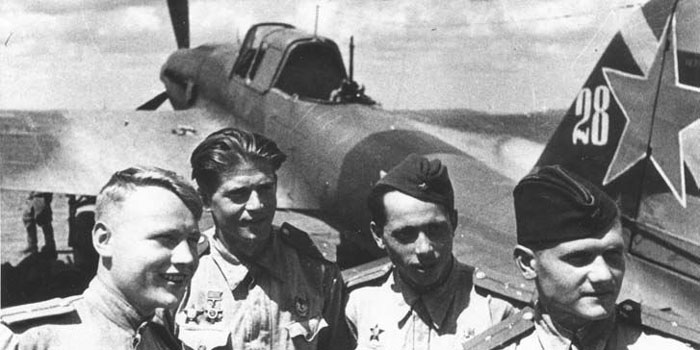
An Il-2M of Zavod 18, probably in spring 1943.
The white band is similar to that of some known planes of 606 ShAP; it looks wider on the rudder than on the fin.
Remains of a partial white winter camouflage are still visible on the wings and the green part of the rudder, while the most art of the tail and rear fuselage look freshly repainted with the green-black camouflage.
Note that the number 28 is parallel to the ground, and the digits become lower close to the fin leading edge.
A drawing of white 28.
Click on the profile to see a larger 3-views drawing.
Junior Lieutnant V.P. Aleksukhin and the gunner A.D. Gatayunov are the most successful crew of 617th ShAP, that fought on the Kharkov front on August 1943.
The plane, shows the inscription Aleksandr Suvorov on the fuselage and his portrait painted on the stabilizer, on both sides.
This image shows also a monogram underlying the inscription; this monogram seems to have been deleted in a second time.
The plane is typical of Zavod 18, with the black-green camouflage and the black 'amoeba' around the star on the tail.
A reconstruction of Aleksukhin's plane.
Click on the profile to see a small page with further photos and larger 3-views drawing.
This plane of 8 Gv. ShAP of the Navy was photographed in the summer of 1944; it appears repainted, remarked and repaired with pieces of other planes with the post-August 1943 camouflage.
(Photo from Red Stars of Geust, Keskinen, Stenman, Opali Oy)
A reconstruction of plane 24.
Click on the profile to see a small page with further photos and larger 3-views drawing of this plane and other ones of the same unit.
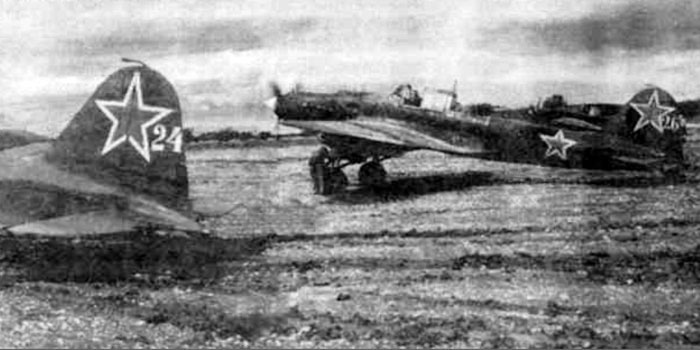
Plane n.26, aside n.24, features a lighter repainting of the metallic part of the fuselage and light camo bands on the wings; probably its camouflage was updated with some light brown after the summer of 1943.
A reconstruction of plane 24.
Click on the profile to see a small page with further photos and larger 3-views drawing of this plane and other ones of the same unit.

Vassili Yemelyanenko (or Emelyanenko) of 7. Gv. ShAP with his colorful Il-2M White 100. He was a musician; in the movie, he is singing one of his songs.
The plane is clearly a two-seater with straight metal wing with short antenna mast, 'type 1943 early'. Other photos show the typical pattern and markings of planes built in Zavod 18.
The typical mark of the planes of this unit was a white band around the fuselage; other planes (unknown if this one too) wear red stars on the spinner and the front of the landing gear nacelles.
A reconstruction of plane 100.
Click on the profile to see a small page with further photos and larger 3-views drawing of this plane and other ones of the same unit.
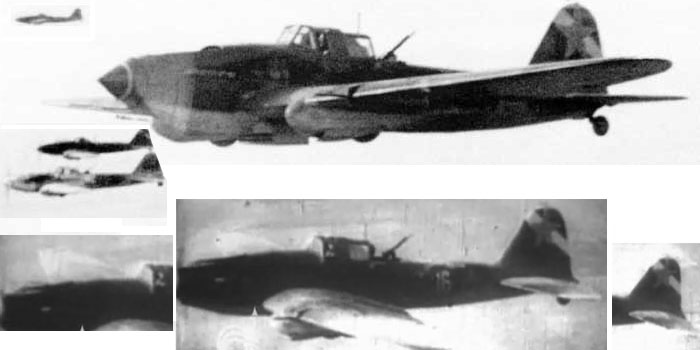
Plane n.16 of 7 Gv.ShAP shows a different position of the white band if compared to the photos of Emelyanenko's plane and white 26 of the same unit: on the tail, instead of around the rear fuselage. The fin/rudder stabilizers/elevators appear with white tips too.
The photo includes other three planes flying with 16, including two singleseaters with the oblique band and a twoseater still with partial winter camo.
The plane bears an inscription on the left side; it is not readable in these photos, but it is reproduced as 'For Leonid Vyaryu' on a drawing of the Polish monograph Loctnicze on Il-2 and 10. Now, this name isn't present in the records of 7 GvShAP; eventually, if one supposes that the name Leonid is right and the surname is badly read, it could be that of pilot Lieutenant Leonid I. Novak , killed on 26/07/1943, but the inclusion of a winter painted plane suggests that the images were taken in spring 1943, so he hadn't yet been killed at that time. I've excluded Leonid Ivanov, killed in 1944; no other Leonid result in the records. Anyway my drawing is conformal to the Polish drawing, hoping that they had better images of the plane.
Thanks to Vitaliy Timoshenko for his informations.
A reconstruction of plane 16.
Click on the profile to see a larger 3-views drawing of this plane.
This Il-2M belongs to the 7th Gv. ShAP, the same unit as the well-known Yemelyanenko's n.100.
It has obviously a straight metal wing, so it is certainly of Zavod 18; the pitot probe is in outer position, suggesting than the plane was built during the summer 1943, during a transition period for painting standards.
It has the white-red bordered stars introduced in August 1943; the one on the tail looks irregular, probably due to rotation of the rudder.
The camouflage is of difficult interpretation and looks to show light areas, possibly in brown. Other photos suggest that the original camouflage of the plane was green-black, and was modified after August 1943 with the addition of brown.
A reconstruction of plane 26.
Click on the profile to see a small page with further photos and larger 3-views drawing of this plane.
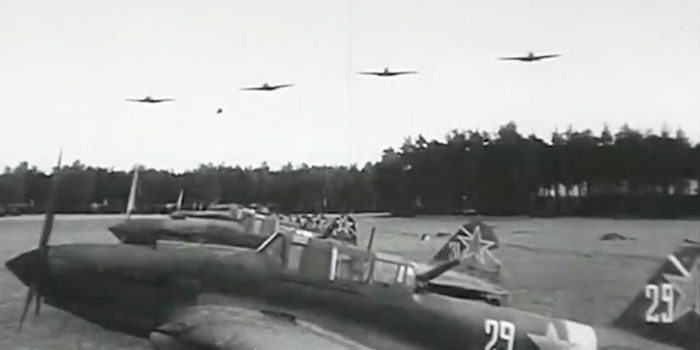
Il-2s of 74 ShAP, whose mark was a thin white line on the tail and a wider white band on the fuselage. The photo is probably of the late 1943 or 1944, as remarked by the wide white-red outline on the national markings of the planes of the line.
Plane n.29 is surprising for the low contrast of its camouflage, when compared both with the more contrasted green-grey-brown livery of plane n.31 on the background, both with its own black spinner.
Plane n.29 is clearly built before August 1943, as remarked by the tunnel type canopy, whose proportions suggest it was built in Z.18 (the back window is long about 1/3 of the side window of the gunner, instead of 1/2 as on planes built in other factories).
The low contrast of the camouflage could be explained both with the fading of the black bands, both, less likely, with the use of dark grey AMT-12 instead of black, a thing that was authorized for bombers during the transition period around July-August 1943 (this would be the only known example in available photos).
Note the dark outline of the red stars, perhaps silver or yellow, in contrast with the candid bands and bort numbers.
Besides, there is something on the fin that could be a small red star, perhaps for an air victory.
A reconstruction of plane 29.
Click on the profile to see a small page with a larger 3-views drawing of this plane.
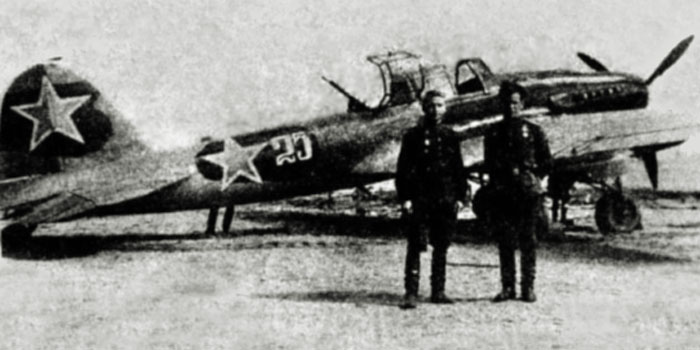
An Il-2M of 17th Gv.ShAP, probably in the fall of 1943.
The plane looks a green-black one built in Z.18 in the first half of 1943, updated with white-red outlines on the stars and with light brown repaintings on the tail and perhaps on the wings that appear strangely light. A white spinner can be deducted from the image, and white aiming lines are visible over the nose.
Thanks to A. Ruchkovsky for his help.
A reconstruction of White 25.
Click on the profile to see a larger 3 views drawing.
An Il-2M of early type probably photographed after August 1943. What can be seen of the camouflage looks of Zavod 18, but the position of the stars is a bit unusual for this factory.
It features:
- replacing of the rudder with one of a later type with different painting;
- multiple repaintings of the stars on the tail and fuselage;
- a field-shortened 'tunnel' canopy to allow a greater field of defensive fire.
A reconstruction of White 12.
Click on the profile to see a larger 3 views drawing.


Two photos of the plane flown by HSU Nelson Gevorkovich Stepanyan when he was an instructor to the 3rd VVS-KBF school, in 1943 up to April 1944.
Many photos of this plane exist and they were long debated at http://sovietwarplanes.com/board/index.php?topic=995.0.
The plane is of a variant built between late 1942 and July 1943: twoseater, with tunnel-style canopy with short end as from Z.18 production, short aerial mast, metallic straight wings.
Its livery is unique: over an uniform grey uppersurface, there are bands of two dark colors, most probably red and dark emerald green, Two paintings showing the support of Il-2s to friendly ships and an attack of the planes to enemy ships are traced on the sides of the fuselage.
The plane had a 6-braced red star on the spinner, and 5-braced kremlin-style stars on the front of the nacelles.
The front of the props was white of silver, with red arcs on them.
The rear gun was removed, operating the plane far from the frontline.
More images and informations on Stepanyan and his plane can be found here.

A reconstruction of this plane flown by Stepanyan at the VVS KBF school in 1943/44..
A whole page with more images, informations and a large 4-views drawing can be accessed by clicking on the profile.
The planes built in Zavod 30 were characterized by:
- wooden wing consoles;
- longer rear part of the tunnel canopy, if compared to those of Zavod 18;
- black/green camouflage with characteristic pattern with sharp oblique bands on the tail, 'balls' on the fuselage sides (not always) and longitudinal bands on the wings, similar to that seen on singleseaters built in the same factory during the year 1942;
- plain red stars; sometimes the ones on the fuselage were posed in very high or very low position.
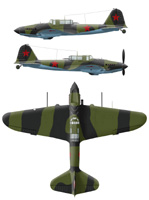 Starting
from the summer 1943, Zavod 30 produced many Il2-37 with underwing gunpods
for NS-37 guns.
Starting
from the summer 1943, Zavod 30 produced many Il2-37 with underwing gunpods
for NS-37 guns.
To know more on Il2-37, click here:
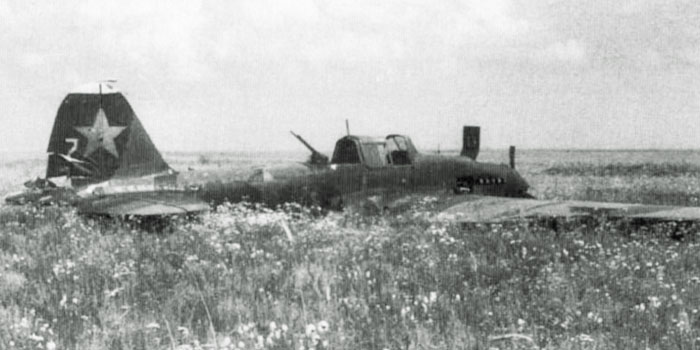
In the photo, a production Il-2M 'white 7' of 667th ShAP with the standard UBT machine gun downed in German-held territory, probably in spring 1943.
The camouflage of the tail and rear fuselage reveals that the plane was built in Zavod 30.
Note the plain red star overposed to the classic fuselage 'ball'.
Other planes of the same factory had a variant of the camouflage without such 'balls', and the black band on the rear fuselage was more extended forward.
(from Squadron-Signal Ilyushin Il-2 in action)
Below: a drawing of White 7
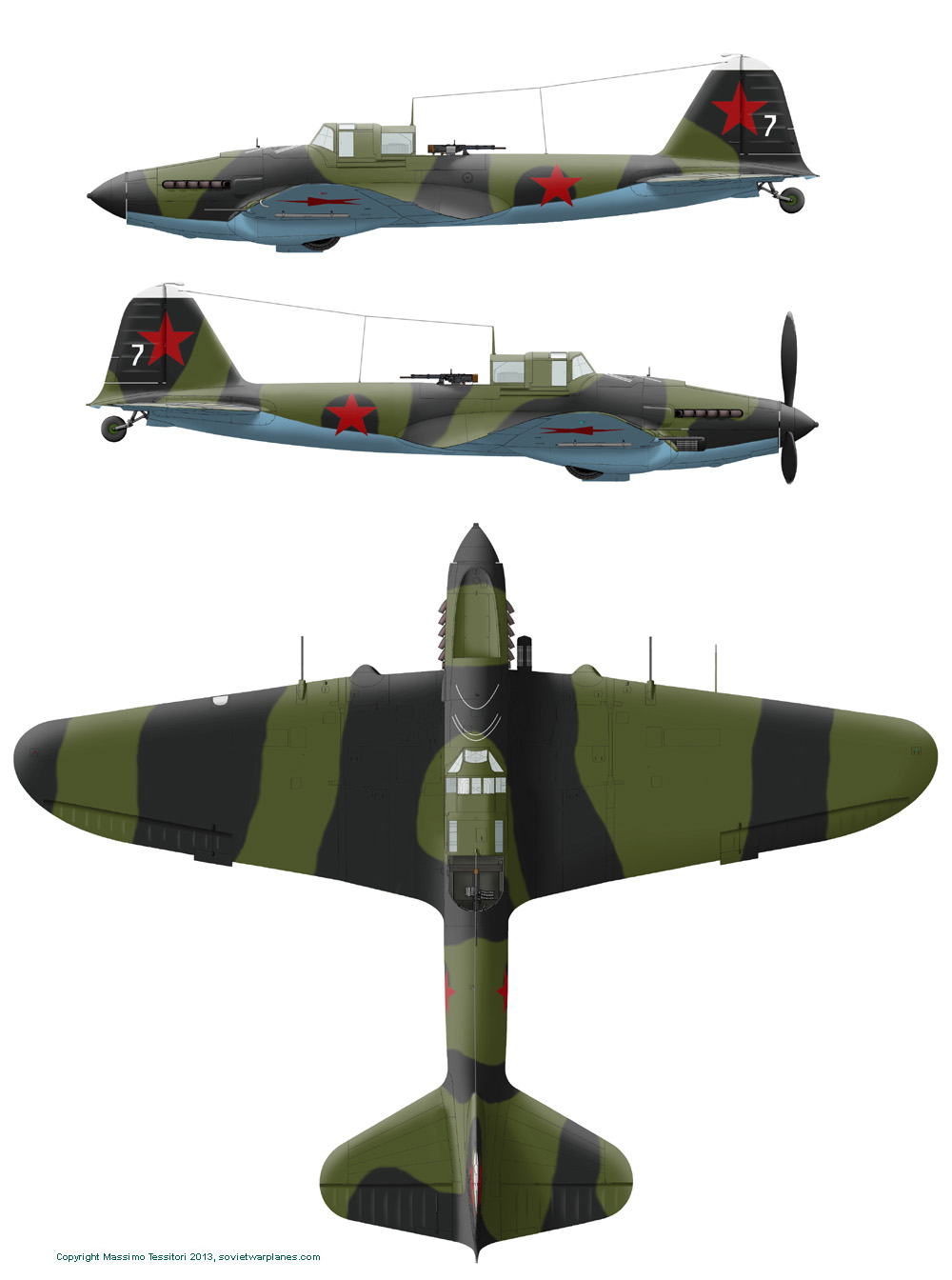
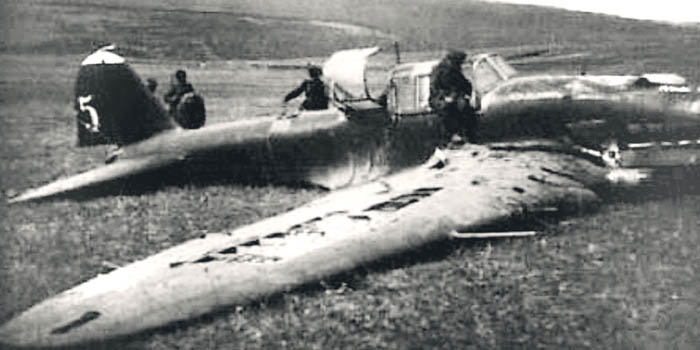
Probably similar to the plane above, white 5 of capt. Boris Lopatin of 667 ShAP was shot down by the German flak on May 25, 1943, during an attack to an airport. The pilot survived and joined the partisans for a while.
http://www.warheroes.ru/hero/hero.asp?Hero_id=10470
The plane has wooden wings, and was supposed built in Z.30 as the apparently similar plane white 7.
The short gun barrels suggest that this plane was armed with ShVAK 20 mm guns instead of the usual VYa-23.

A reconstruction of White 5 of Lopatin.
Click on the profile to see a larger 3 views drawing.
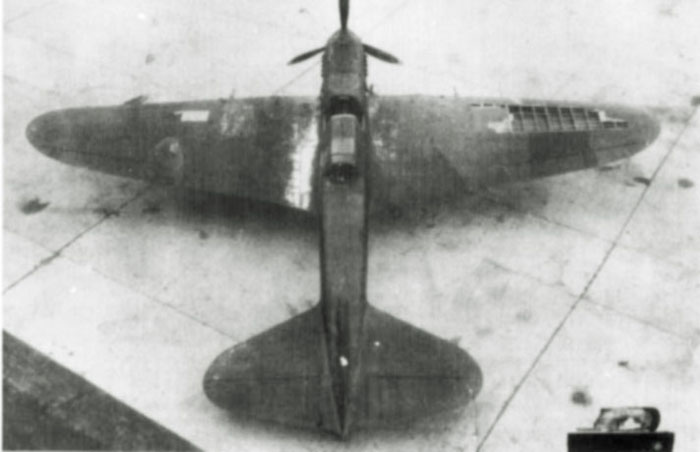
Interesting image of a damaged Il-2M with wooden wing outer consoles. The wooden wings were considered worse than metal ones because they were more vulnerable to enemy fire, and a hit could destroy an higher amount of skinning.
Note the wearing on the port wingroot, that was made of light alloy; the crew accessed the canopy from this side.
The camouflage of the wings, with longitudinal bands, seems the typical one of factory n.30, usually there were 3 black bands on the left wing and 2 ones on the right wing, just as on the NKAP scheme of June 1941.

Il-2M white 912 captured by Finns.
The black-green camo of Zavod 30 looks recognizable on the tail.
The strange 3-digit number and the unusual demarcation line between the upper and lower surfaces are evident. Note that the height of the digits is not constant.
A reconstruction of White 912.
Click on the profile to see a larger 3 views drawing.
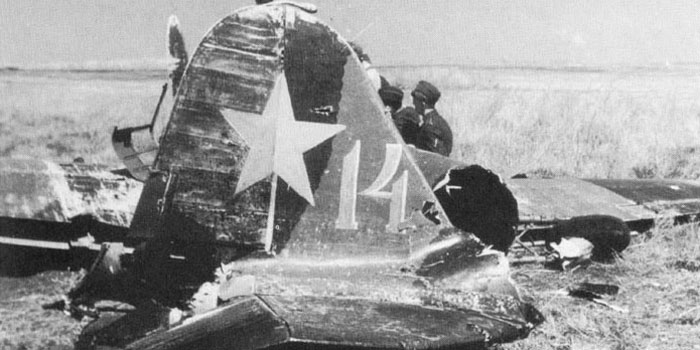
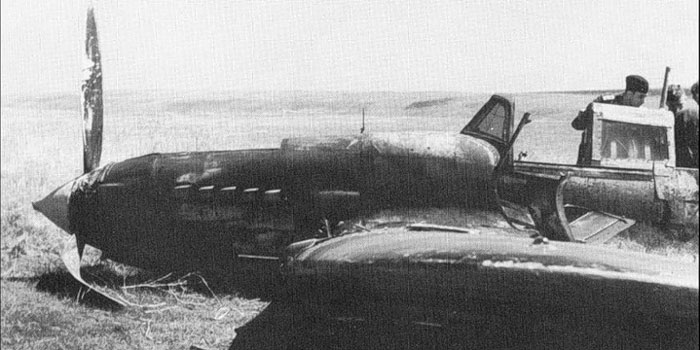
Two photos of red 14.
The camo lines seem made by brush, and it bears still traces of white winter paint over the black-green camo of Zavod 30, and perhaps on the prop blades. The red number 14 on the tail has a white shadow.
The front part of the spinner is painted white. The canopy of the gunner looks omitted.
The plane, probably built at the end of 1942 or the beginning of 1943, is armed with 20 mm ShVAK guns on the wings instead of VYa-23 .
A reconstruction of red 14.
Click on the profile to see a larger 3 views drawing.

Another Il-2M white (or silver ) 29, this one of 15th GShAP.
The camouflage, although showing evident repaintings to cover repairs or to improve the camouflage with different shades, is unmistakably the classic one of Z.30 with side 'balls'.
Repainting with lighter colors have been often observed on Il-2s with black-green camouflage, suggesting the use of light brown AMT-1 even before it was included in the official templates of August 1943. As an alternative, it could be assumed as a lighter shade of green.
The canopy is of tunnel type and the radio mast is short, suggesting that the plane was built in late 1942 or the first half of 1943.
A reconstruction of White 29.
Click on the profile to see a larger 3 views drawing.
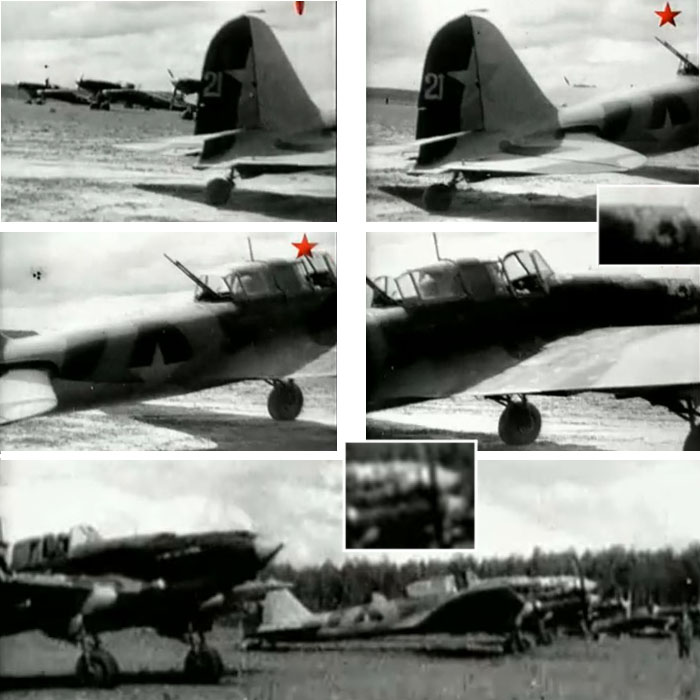
Plane n.21 is thought to be of 566 ShAP, during the battle of Kursk in summer 1943.
It is certainly from Zavod 30, with the fuselage star in particularly low position.
Its most interesting characteristic is the addition of two shades of lighter colors on the rear fuselage and tail.
Another interesting characteristic is what seems an individual emblem on the right side of the nose, probably a white eagle attacking a snake.
On the photo of the line, we see a nearly identical plane, but apparently with a different number on the tail (13?) and minor differences on the rudder. The emblem of a white eagle attacking a snake looks present on this plane too. It is unclear if the difference is real or it's the very same plane.
One can only hypotyze what colors were used, probably obtained by some mix.
About the color of the spinner: the nose of 21 is not visible on the screenshots. Other planes of the unit show white front of the spinner only. The plane supposed '13' seems to show a white-black-white spinner, or perhaps an overall white spinner partially hidden by a black prop blade. It looks to have a white or silver front of the wingroot intake.
A reconstruction of plane 21, of its camouflage and mark.
Click on the profile to see a larger 3 views drawing.
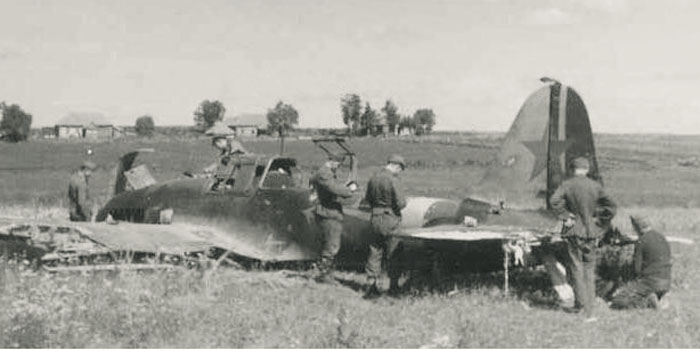
A plane of 566th ShAP after a belly landing. The plane, unclear if of Z.1 or 30, is characterized by white fields on the tail, fuselage and spinner and by a (yellow?) lightning (unit marks). There should be a white number on the rudder, unfortunately covered by the soldier.
A reconstruction of this plane. The plane was represented with ShVAK guns on the wings, as a similar plane of the same unit.
Click on the profile to see a larger 3 views drawing.
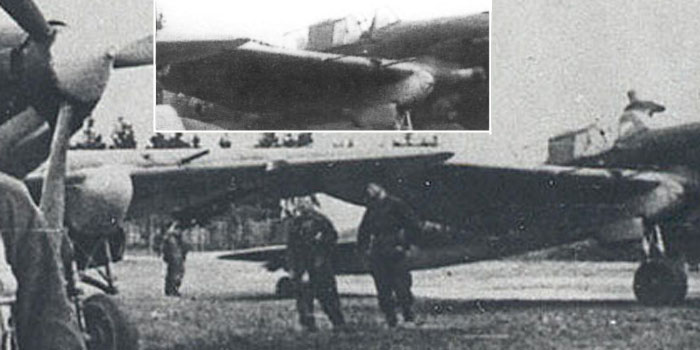
Plane white 24 of 566th ShAP in 1943.
The plane is only partially visible on the photos, but the typical markings of this unit are known from other images.
The closer plane is armed with 20 mm ShVAK guns, but plane 24 shows the long barrel of VYa-23.
Noteworthy are the small red stars on the nacelles of 24, with a white outline and green background and painted a bit downwards.
A reconstruction of this plane.
Click on the profile to see a larger 3 view drawings.

Il-2M White 61 of 801ShAP/132 GvShAP, presumably in fall 1943 or spring 1944.
801 ShAP became 132 GvShAP on 04.09.43
The plane looks to have some characteristics of the planes built in Zavod 30 in the first half of 1943, as the black green camouflage, 20 mm ShVAK guns at the wings and the tunnel canopy, aside other characteristics introduced in late summer or fall 1943: white-red outlined stars (very large) and tall radio mast, probably due to some repair. There are traces of repainting on the nose, rear fuselage and tail, perhaps with the use of light brown paint too.
An interesting characteristic is the outline along the fin's edge, shining on the photo; its color was probably yellow, the regimental color.
The color of the front part of the spinners changes according to the squadron:
- 1 squadron: red
- 2 squadron: blue (dark blue?)
- 3 squadron: white or yellow.
Plane 61 could be of 2nd squadron, with dark blue spinner.
Image and informations via Vitaliy Timoshenko.
A reconstruction of this plane.
Click on the profile to see a larger 3 view drawings.
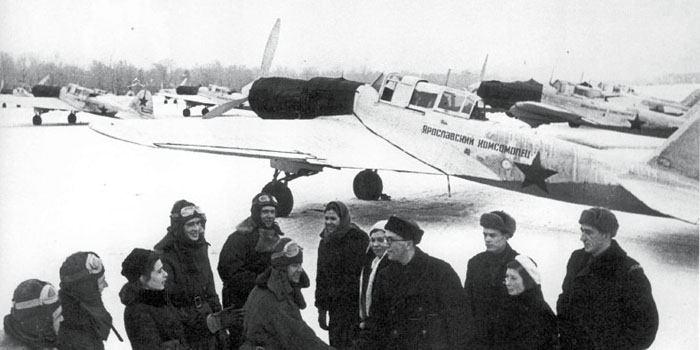
Image of planes of 996 ShAP, Kalinin front, on 31 January 1942.
The inscription means Yaroslavskij Komsomolet (the youngs communist organizations of Yaroslav, that donated funds for 20 planes). Their gift included both single-seaters and two-seaters; probably their donation arrived when the production was being converted to the newer type.
Under the dark covers, the noses are probably painted white. Note that the white washable paint MK-7 covers even the prop blades.
These planes are known to have been built in Zavod 30 (and then with wooden wings).
The red star in low-aft position was seen on some photos of other planes built in this factory.
(From Squadron-Signal, Ilyushin Il-2 in action)
http://yarportal.ru/topic509870s0.html
A reconstruction of one of these planes..
Click on the profile to see a larger 3 views drawing.

A plane of 237 ShAP was dedicated to Ivan Bolotin in winter 1943/44. The slogan looks black and underlined by a lightning.
It's unknown if the slogan was reproduced on the left side too. Bort number, if any, is unknown.
The red stars are of the type utilized after summer 1943. The red star on the fuselage, vaguely visible on the left, is in low position, and this allows to attribute the plane to Zavod 30.
Noteworthy is the rear canopy, that seems of the type built before the summer 1943 but modified to become similar to those introduced in August 1943 to allow a greater lateral field of fire.
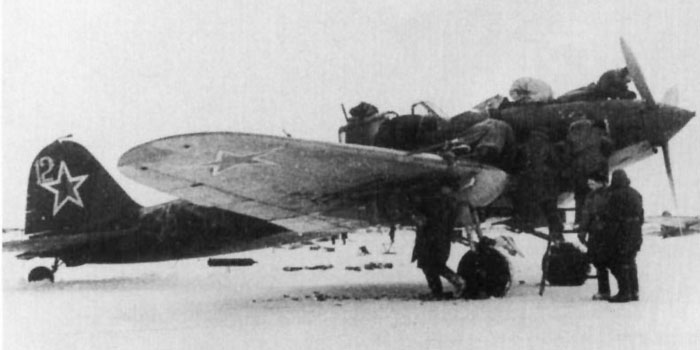

Plane numbered 12 on its rudder and 36 on its fuselage, probably of 174 ShAP in winter 1943/44. The sides of the fuselage look very darkened by stain.
Although the red stars have the post-august 1943 contour, the plane seems to have the black-green camo of zavod 30. The pitot probe in inner position is coherent with a plane built before the summer 1943.
The front part of the spinner gives the idea to be red, with a very thin white outline. A darker repainting is visible under the wingtip (AMT-7 over AII light blue?).
Thanks to A. Ruchkovsky and V. Timoshenko.
A reconstruction of White 12/36.
Click on the profile to see a larger 3 views drawing.

Red 5 with lightning flown by A.G.Andrianov of 800th ShAP. The mark, very darkened by stains on this photo, was typical of this unit.
http://zarodinu.info/144gshap/lichnyi-sostav/a/a_13.html
It looks a plane built in Zavod 1, photographed in winter 1942/43.
It features a partial winter camo that seems to cover, preferentially but not uniquely, the black bands on the tail and some on the wings too. The red stars and the red 5 look both partially covered by a light layer of white paint.
Note the damages to the left wingroot and elevator, probably due to AA fire.
The nose is hidden by a light cover.
A reconstruction of Red 5.
Click on the profile to see a larger 3 views drawing.

White 63 of 999th ShAP.
Although the wing is unrecognizable from this perspective, the short mast identifies this plane as a straight-winged Il-2M.
The style of painting is well different from the ones seen on other Shturmoviks; looks black-green with non-standard pattern.
The lack of stars on the fuselage is highly unusual too. The white-outlined star on the tail suggests a plane of Z.18, but could also be of the post-1943 style.
The gunner's canopy looks the early type, modified by removing the rear side windows and their struts to increase the lateral field of fire.
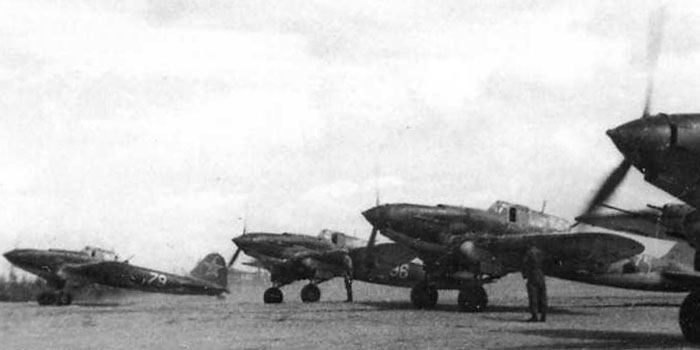
Other planes of 999th ShAP.
Planes 79 and 96 resemble to 63, have not any star on the fuselage, while the one on the tail is contoured white.
Plane 75 has a star on the fuselage, but perhaps not on the tail, and resembles of Z.30.
The closer plane, whose number is not visible, has ShVAK guns instead of VYa-23, and this suggest a plane built in Z-1 or 30 with wooden wings.



